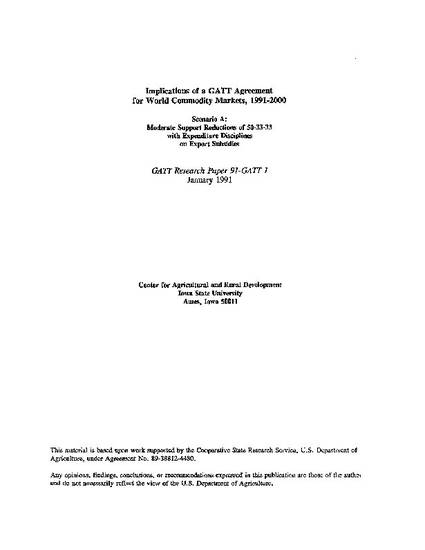
Article
Implications of a GATT Agreement for World Commodity Markets, 1991-2000
GATT Research Papers
Publication Date
1-1-1991
Series Number
91-GATT 1
Abstract
A dynamic multicountry, multicommodity model is used to evaluate the impact of a moderate General Agreement on Tariffs and Trade (GATT) agreement. The terms of this agreement are as follows. 1) Export subsidy quantities (using annual and price wedges) are reduced by 50 percent from the 1986-88 average by 1996. 2) Import restrictions are tariffed and reduced by 33 percent form the 1986-88 average by 1996 (tariffs are measured by using an annual price wedge approach). 3) Internal supports, as measured by the aggregate measure of support (AMS) are reduced by 33 percent from the 1986-88 average by 1996 (fixed reference prices are used). The results indicate that the U.S. producers would benefit substantially from the agreement because the United States has made or will have made many of the cuts required by this moderate agreement. The results also indicate that the choice of the base year is a very important variable influencing the relative benefits and losses under any likely GATT agreement.
Disciplines
Copyright Owner
Iowa State University
Copyright Date
1991
Citation Information
Brain Lee Buhr, James Hansen, Zuhair A. Hassan, Dermot J. Hayes, et al.. "Implications of a GATT Agreement for World Commodity Markets, 1991-2000" (1991) Available at: http://works.bepress.com/dermot_hayes/126/
